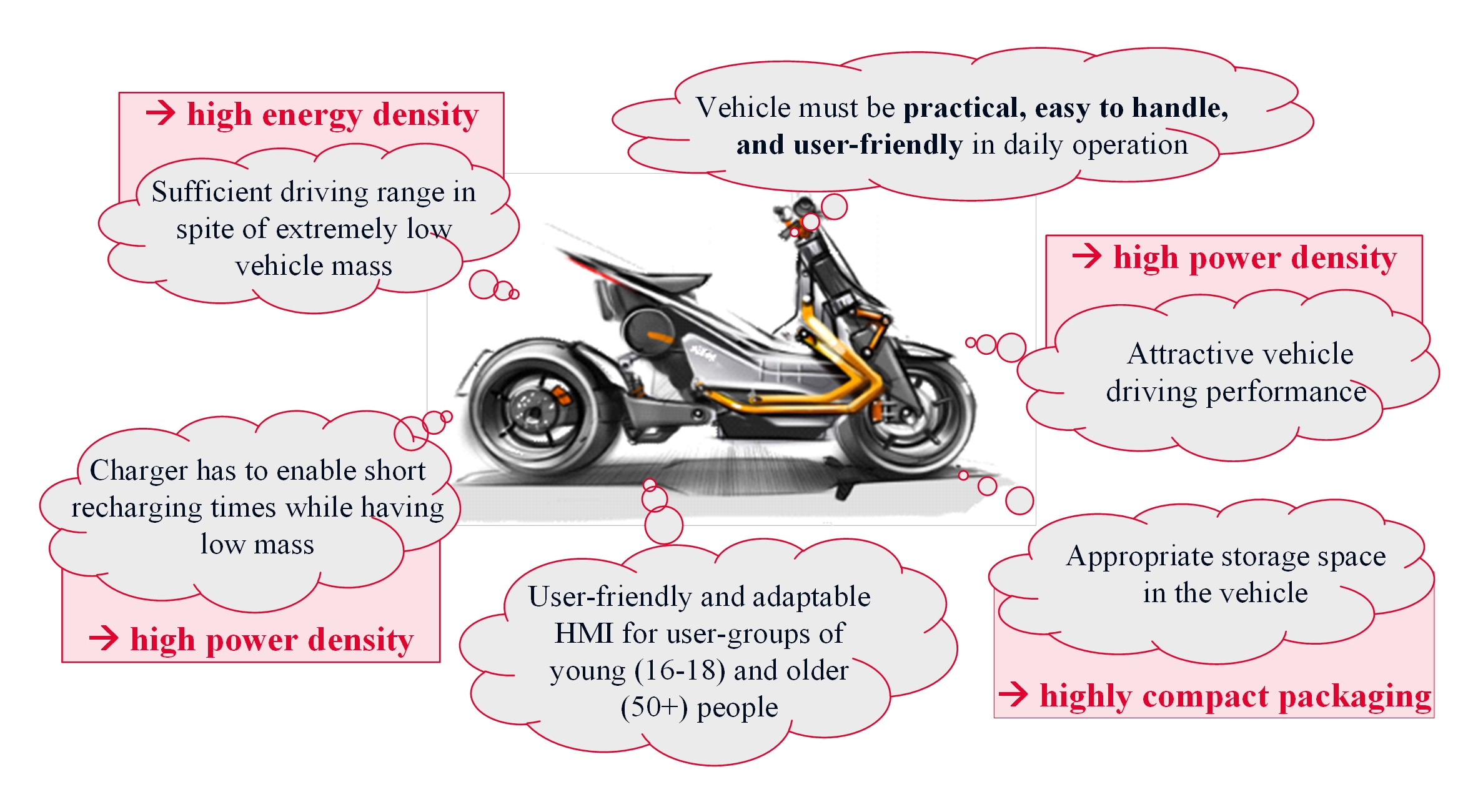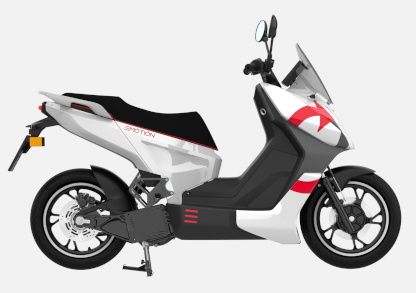According to the United Nations the global light duty vehicle fleet including passenger cars and light commercial vehicles is growing rapidly, from about 1 billion vehicles today to more than 2.5 billion vehicles worldwide in 2050 [1]. The increasing number of vehicles will triple global carbon dioxide emissions. Austrian carbon dioxide emissions currently stand at about 10 tons per person annually, from which roughly 30 % are contributed by traffic emissions [2]. To reach the goals of the Paris Climate Agreement the current emissions in Austria need to be reduced to 1 ton per person annually by 2050.
Electric vehicles are a necessary step in decarbonizing the transport sector. According to the International Energy Agency (IEA), this transition will require an effective pursuit of global rail transport electrification, and at least 20 % of all road transport vehicles need to be electrically driven by 2030 [3].
Electric motorcycles’ zero-emission, low noise level and high energy efficiency features, therefore, promising the potential to alleviate the severe environmental pollution problems caused by existing gasoline motorcycles. However, electrification of two-wheelers faces different requirements than battery electric passenger cars.
The technical demands for motorcycles with battery electric propulsion system, specifically for ELV in urban, suburban and rural applications, are based on the expectations from vehicle customers.

The current e-mobility systems on the two-wheeler market has inadequate characteristics and thus are not yet attractive enough to meet customers’ expectations.
[1] https://www.unenvironment.org/explore-topics/transport/what-we-do/electric-mobility/electric-light-duty-vehicles
[2] https://www.umweltbundesamt.at/fileadmin/site/publikationen/REP0608.pdf
[3] https://unfccc.int/news/the-paris-declaration-on-electro-mobility-and-climate-change-and-call-to-action

